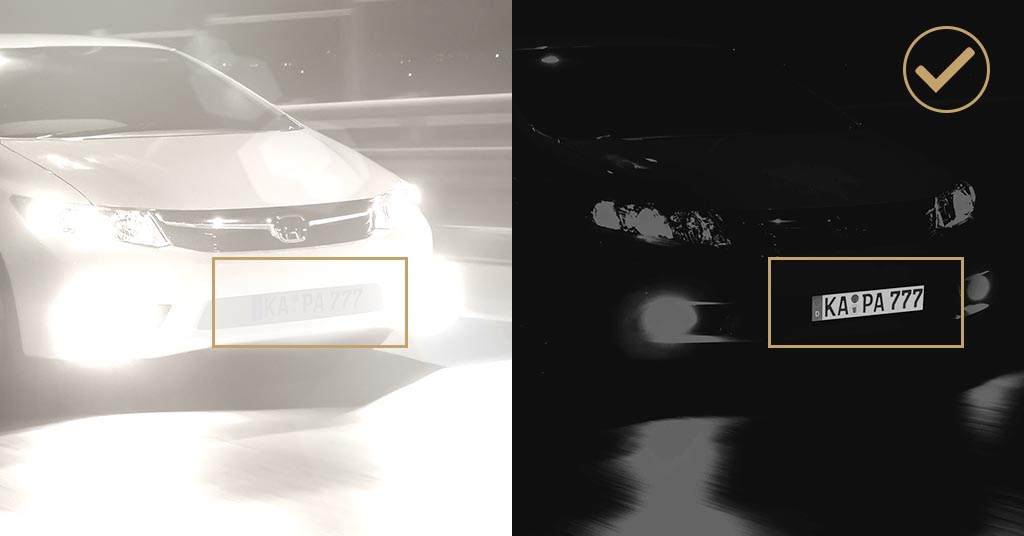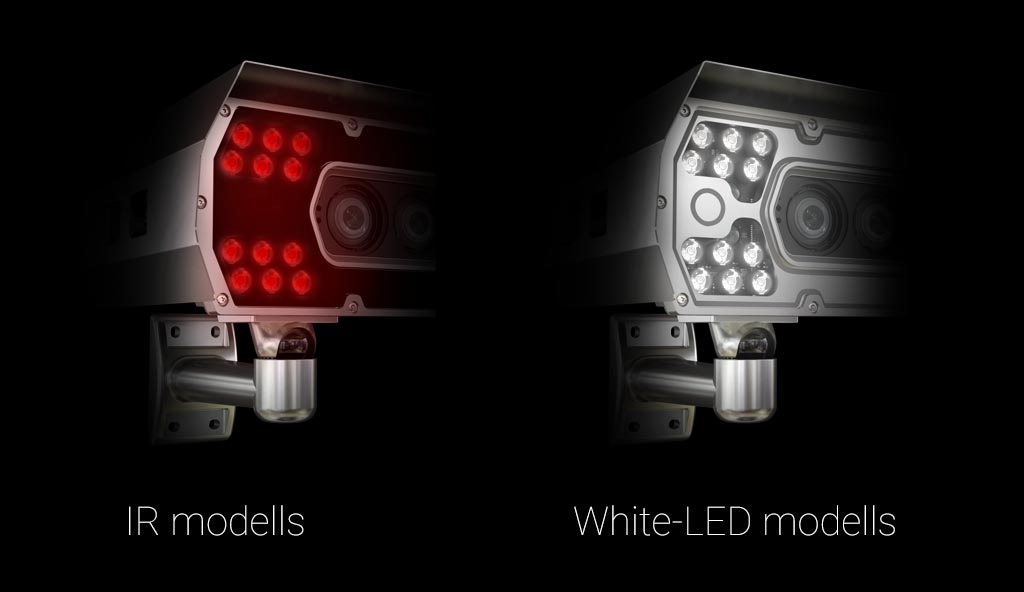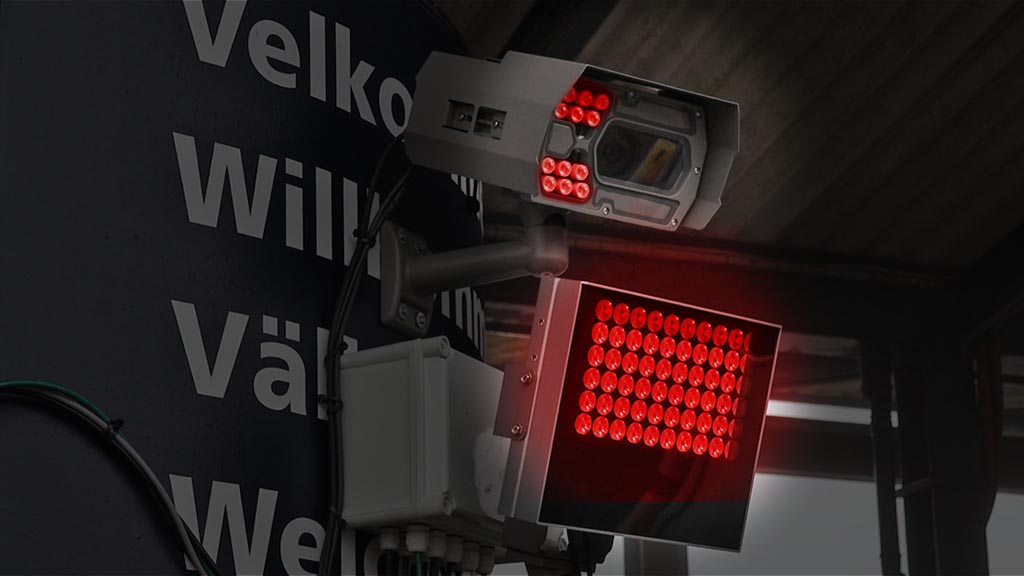The same factors that reduce visibility for the human eye also represent challenges for automatic number plate recognition (ANPR, also known as LPR for license plate recognition). A dirty or soiled plate can be hard to read, so it is challenging to recognize license plates with a high rate of accuracy under improper light conditions.
Although ANPR projects normally don’t require daytime illumination, adding some light comes in handy during the night. Thanks to advancements in ANPR technology, most license plate recognition cameras with built-in light sensors such as the Vidar ANPR/LPR camera, the Vidar Speed camera with speed radar, or the Einar vehicle access control camera can switch automatically between day- and nighttime operation and Vidar can even set different degrees of illumination, even from one frame to another.

In this article, we address your most pressing questions about illumination: Will built-in illuminators in your camera suffice? What legal regulations affect the choice of wavelength? Which illumination method to choose?
Using built-in illumination or separate illuminators
You may wonder whether additional illuminators apart from the built-in illuminators of your ANPR camera are necessary for your ANPR project. The general rule of thumb is that if you only want to read license plates, the illuminator built-in to ANPR cameras such as Vidar or Einar should suffice. For other use cases, however, such as determining vehicle occupancy, external illumination would be required. This is the case with our Vidar PAX passenger counting camera subsystem, which takes images of vehicle occupants with the help of infrared wavelength light, and counts passengers on the captured image.

Using different degrees of illumination for the best possible ANPR results
Some ANPR cameras use the so-called frame parity flashing technology. That means the cameras take several images of the vehicle with different illumination levels, and the system will then automatically select the best image for automatic license plate recognition processing. This method is also applied extensively in Adaptive Recognition ANPR cameras.
Legal regulations about the use of light
Local legal regulations may challenge the application of specific illumination technologies. In many countries, it is forbidden to use visible light to illuminate the vehicle and the plate so as not to disturb drivers. In other countries, white (visible) light is necessary to illuminate plates/vehicles. This is the case with countries where the character or background colors used in the plate have special significance. Two plates may have the same character set but use different background colors (yellow for public transport buses and blue for taxis, for example). In most countries, however, we need to use invisible light, in our case, infrared. This represents challenges when vehicle color also has to be identified besides license plate data, as infrared light is monochromatic, making it difficult for the camera to determine vehicle color at nighttime.

The pros and cons of each illumination method
If there is no legal regulation concerning the source of light, you can keep your options open. Each source of illumination has its advantages and drawbacks. Let’s go through them one by one.
White light – pros and cons
- Pro: white light is not monochromatic, so it is perfectly suitable for identifying vehicles and license plate colors at nighttime.
- Con: It may disturb the driver and therefore represents a road safety risk.
Infrared – pros and cons
- Pro: Infrared light does not disturb the human eye, it is barely or not visible, so does not represent a risk factor.
- Con: it is monochromatic, therefore is no use for identifying colors.
Other illumination methods
We at Adaptive Recognition use lights of different wavelengths within the infrared range in the illuminators of our cameras. The choice of infrared wavelength will depend on the region where the camera will be used, or more precisely on the types of paint used for license plates, and their light transmission or absorption characteristics.

Which method to choose?
In every case, we have to consider where the cameras are going to be installed. This information can be used to decide on the optimum wavelength. It is the particularities of your automatic number plate recognition project that will determine the best possible configuration for illumination.
Get in touch and feel free to arrange a brief discussion with our experts who will be happy to assist if you have a specific technical question.

